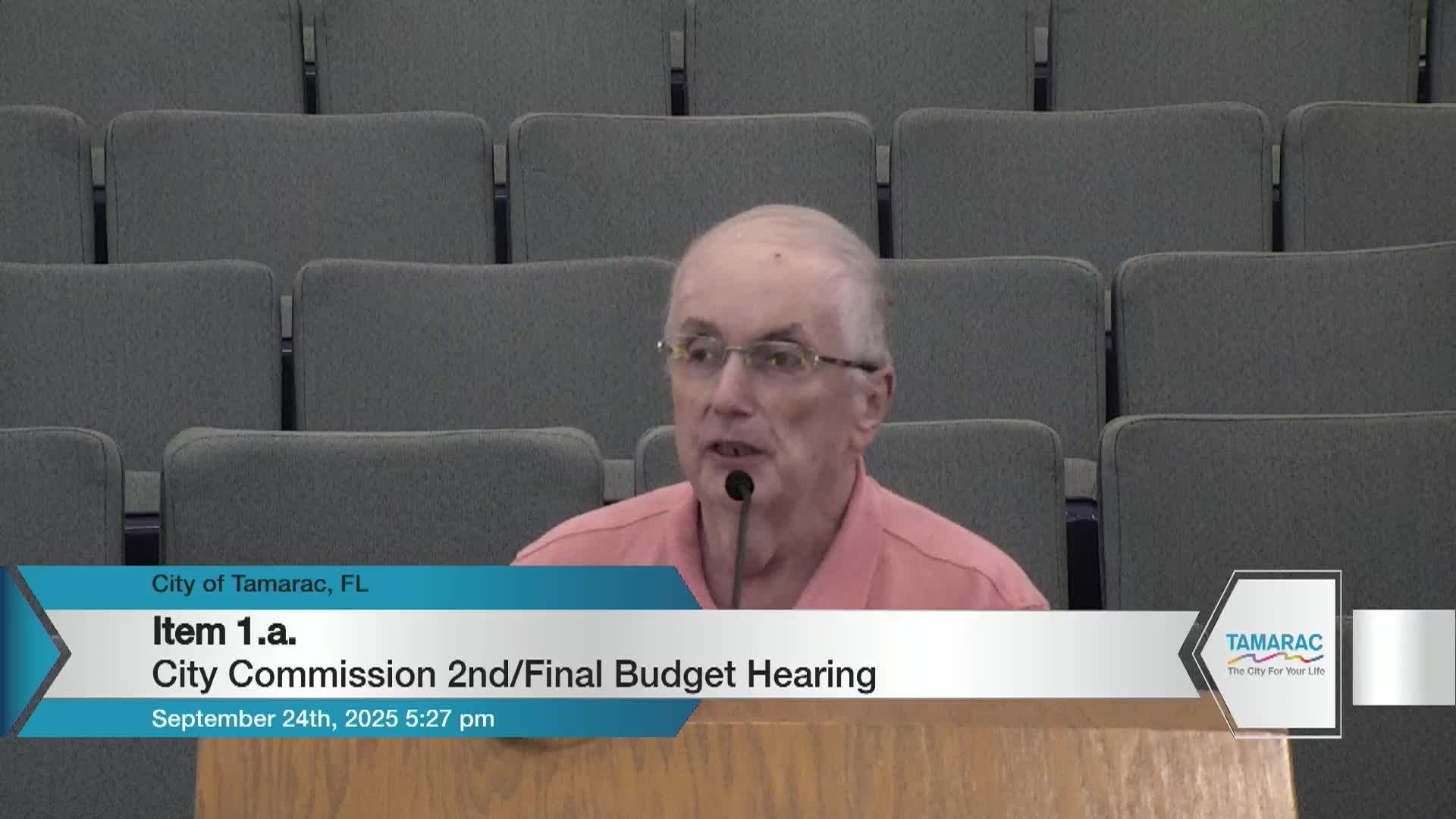Tamarac Commission Discusses Property Tax Rate Amid Declining Home Values
September 24, 2025 | Tamarac, Broward County, Florida
This article was created by AI summarizing key points discussed. AI makes mistakes, so for full details and context, please refer to the video of the full meeting. Please report any errors so we can fix them. Report an error »

In a recent special city commission meeting held in Tamarac, Florida, city officials gathered to discuss critical financial matters, particularly the operating millage rate for the upcoming fiscal year. The atmosphere was charged with anticipation as commissioners weighed the implications of potential tax cuts proposed by the state, which could significantly impact local revenue.
The meeting opened with a reminder of a front-page story in the Sun Sentinel, highlighting the state’s focus on reducing property taxes in the next legislative session. This news prompted discussions among commissioners about how such changes could affect Tamarac's financial landscape in the future.
Commissioner Wright made a motion to set the operating millage rate at 7 mils, which represents a 6.21% increase from the rolled-back rate of 6.906 mils. This proposal sparked a lively debate among the commissioners, particularly with Commissioner Bolton advocating for a reduction in the millage rate based on historical trends and current property value fluctuations.
Bolton pointed out that property values in some areas are declining, which could lead to decreased tax revenue if the millage rate is not adjusted accordingly. He emphasized the importance of maintaining a stable tax environment for residents, especially as many homeowners are experiencing drops in their property values. For instance, he shared that his own home’s value had decreased from $329,000 to $295,000 over the past year.
The discussion also included a detailed examination of past millage rates, revealing that the city had previously reduced the rate in response to rising property values. Bolton argued that a similar approach should be considered now, as declining values could lead to financial strain on the city’s budget if the millage rate remains high.
As the meeting progressed, the finance director provided insights into how a reduction in the millage rate could affect tax bills for residents. For example, a homeowner with a property valued at $150,000 would see a tax bill of approximately $1,050 at the current rate, compared to $700 if property values continue to decline. This perspective aimed to clarify for residents that a higher millage rate could be perceived as a tax increase, while in reality, it might represent a savings depending on property valuations.
The meeting concluded with a call for further research into the historical voting patterns on millage rates, as commissioners sought to understand the implications of their decisions on the community's financial health. As Tamarac navigates these complex financial discussions, the outcome of the millage rate decision will undoubtedly shape the city’s fiscal future and the economic well-being of its residents.
The meeting opened with a reminder of a front-page story in the Sun Sentinel, highlighting the state’s focus on reducing property taxes in the next legislative session. This news prompted discussions among commissioners about how such changes could affect Tamarac's financial landscape in the future.
Commissioner Wright made a motion to set the operating millage rate at 7 mils, which represents a 6.21% increase from the rolled-back rate of 6.906 mils. This proposal sparked a lively debate among the commissioners, particularly with Commissioner Bolton advocating for a reduction in the millage rate based on historical trends and current property value fluctuations.
Bolton pointed out that property values in some areas are declining, which could lead to decreased tax revenue if the millage rate is not adjusted accordingly. He emphasized the importance of maintaining a stable tax environment for residents, especially as many homeowners are experiencing drops in their property values. For instance, he shared that his own home’s value had decreased from $329,000 to $295,000 over the past year.
The discussion also included a detailed examination of past millage rates, revealing that the city had previously reduced the rate in response to rising property values. Bolton argued that a similar approach should be considered now, as declining values could lead to financial strain on the city’s budget if the millage rate remains high.
As the meeting progressed, the finance director provided insights into how a reduction in the millage rate could affect tax bills for residents. For example, a homeowner with a property valued at $150,000 would see a tax bill of approximately $1,050 at the current rate, compared to $700 if property values continue to decline. This perspective aimed to clarify for residents that a higher millage rate could be perceived as a tax increase, while in reality, it might represent a savings depending on property valuations.
The meeting concluded with a call for further research into the historical voting patterns on millage rates, as commissioners sought to understand the implications of their decisions on the community's financial health. As Tamarac navigates these complex financial discussions, the outcome of the millage rate decision will undoubtedly shape the city’s fiscal future and the economic well-being of its residents.
View full meeting
This article is based on a recent meeting—watch the full video and explore the complete transcript for deeper insights into the discussion.
View full meeting